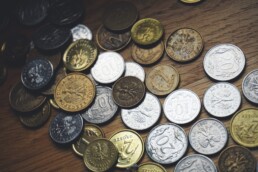Atomic Swap
The Atomic Swap is a method for exchanging or trading your cryptocurrencies very quickly with another person, without an intermediary and trustless directly from your wallet and not from any exchange.
In fact, changing two cryptocurrencies implies that there are costs for using an exchange, plus the costs of handling the coins to which the wasted time such as registering for the exchange and completing all the paperwork. This obviously does not allow us to operate within a few minutes, perhaps making us miss out on interesting opportunities on the market.
With the atomic swap we skip all these problems. Swap means exchange while the term atomic comes from the computer world and implies that an operation is conducted as planned or not conducted at all.
So looking into the details of the exchange, this must happen exactly as we have organized or it will absolutely not happen.
To give you an example of a non-atomic swap, it would be like sending the coins to a stranger hoping that he doesn't run away or that he sends me the correct coin number we agreed on.
In the atomic swap there is no human error, manipulation or fraud and it only works with crypto and not with fiat currency.
The atomic swap works through the use of smart contracts, since these allow users to avoid fraud by checking that the funds involved in the exchange are really present in the wallets of the two protagonists. These smart contracts are called Hashed Time Lock contracts.
Funds are blocked within smart contracts and can be publicly controlled on the blockchain. These funds can only be unlocked with a key called preimage that matches the hash of this contract.
At any time before the exchange, one of the parties can withdraw and the funds will return free in the wallet of the previous owner.
Atomic swaps aren't perfect as they have limitations. In fact, exchanges must only be made with coins that support specific types of smart contracts and that have the same algorithm
Some wallets already include this exchange option within them. Learn more about wallet here.
As you can see, atomic swaps can be a useful solution to bypass exchanges when we want to trade particular coins. At the moment it is not possible with all of them and therefore we will still have to go through an exchange.
How to buy a cryptocurrency
Today in this short article we are going to see how to buy a cryptocurrency in 3 simple steps:
Phase 1: Research.
Before doing anything you have to find out what you want to buy. That seems trivial, but the crypto market offers a disproportionate number of coins to buy. First of all we need to understand if we want to choose a coins with a glorious past or a coins that have just come out on the market. You have to make this research, which can also be based on suggestions given by the media or friends. Be careful in this case not to be fooled by possible scams.
Analyze the situation of the coin on a graphical level and everything that revolves around it.
Phase 2: SAFETY
Once you have chosen the coin you want to buy, the first thing to do is find a secure wallet and create it.
Phase 3: BUY the coin
Open the exchange and press the BUY button.
Now some recommendations:
Always do extensive research on the coin you are analyzing and if someone has suggested it to you, try to understand if it is a disinterested suggestion or not.
Obviously NEVER follow the hype. The hype invariably leads to entering at inflated prices and then losing a lot of money. Enjoy the hype by standing at the window.
Remember that wallets are programs to hold your coins so pay attention to the different types of wallets and different types of addresses. If you get the wrong address, you have lost your coins.
Learn more about safety here.
Airdrop and Bounty
FREE MONEY !!!
I'm sure I have your attention now. And yes, Airdrop and Bounty are free money, well almost.
What are these two terms and what do they hide?
They are neither more or less a method of advertising in the world of crypto
Let's start with the airdrop or launch of tokens from a plane, in fact an Airdrop is nothing more than a rain token delivery on a set of addresses. Generally, airdrops are created by subscribing to some forms, where in the simplest cases you simply enter your email and ethereum address up to more complicated cases where you even ask for a KYC.
The bounties, on the other hand, are a more complicated version of airdrop. The user is asked for a more articulated and complex social action or promotion, for a greater amount of tokens.
Examples could be writing an article or creating a video, or software checks and so on
The limit is only the imagination of the advertising creators.
Fork
If you've heard of cryptocurrencies or are starting to get interested, then you've easily heard of FORK.
What is a Fork?
A Fork is a split into two different “directions” of the software of a cryptocurrency.
The most famous forks were the Bitcoin forks in 2017 and the Ethereum fork, which led to the creation of Ethereum Classic.
Let's start from basic by explaining the Bitcoin fork.
Bitcoin is made up of its own protocol and blockchain.
Since the protocol has rules written inside that can make its development slow in some parts, some developers may think they can improve their bitcoin by modifying the protocol.
The developers will copy the original BTC protocol and will create the necessary changes to make it work by adding only the improvement developments.
The modified protocol will create a new COIN, which will be incompatible with the BlockChain mined before.
After that it will be decided which block to start the modified protocol from. Some miners will continue to mine with the source protocol, while others will support the modified protocol. This will create two distinct blockchains that are incompatible with each other and consequently an additional coin, separated from this chosen block that will go on independently of each other.
The case we mentioned is called Hard Fork.
It should be noted that there is also a "soft Fork", which does not create a different blockchain but simply implements important software changes but still compatible with the pre-existing BC.
Users of the coin see the results of a hard fork in their wallets as a new coin is created while there are no evident results for a soft fork since this remains the prerogative of the developers. We users will be unaware.
Step 2 - What is a Blockchain?
Blockchain, a term now abused and inserted inappropriately in many contexts because it is cool and makes us feel important.
Sounds like in the early 2000s we heard from our shoemaker who had opened his website and he has no idea about what doing with a website.
But what is a blockchain ? What is his purpose? And why is it useful in some situations?
The BlockChain is a distributed and decentralized digital database, shared on a series of nodes, verifiable by anyone and immutable over time.
It is a digital register, whose entries are grouped into blocks linked together in chronological and sequential order, whose integrity is guaranteed by the use of cryptography
Decentralization is guaranteed by the network of nodes distributed around the world, and each of these has a copy of the database, which is distributed among all nodes in the network. To put it simply, nodes are computers around the world owned by individual enthusiasts or large mining companies.
Each new block addition to the distributed blockchain is globally governed by a shared protocol.
Once the addition of the new block has been authorized, each node updates its private copy with the guarantee of automatically discarding fraudulent or incorrect blocks.
Therefore the information written inside the distributed blockchain, owned by each node will always be visible to everyone and this information will never be changed in the future.
It is practically impossible to change information within a block, the computing power required would be enormous.
Thanks to these characteristics, the blockchain is intrinsically superior to normal databases and central controlled registers, managed even by recognized and regulated authorities.
As with every product, variants are developed and various types have also been developed for the Blockchain, created to meet the various needs of every actor operating in the world.
in detail:
- Public blockchains: Blockchains are open to everyone and accessible to anyone. Each node holds a copy of the database and can participate in the decision-making process regarding the state of the ledger. They are defined as "permissionless". Example: the Bitcoin blockchain
- Private Blockchains: They are closed Blockchains where only one or more pre-selected nodes can perform the function of validating the network. They are defined as "permissioned". Example: the Blockchain of a private foundation or a company
- Mixed Blockchains: They are partly public and partly private Blockchains
- Sidechains: They are blockchains derived from the mother blockchain but connected to it. They are in effect autonomous blockchains on which it is expected that there are coins / tokens different from those circulating on the parent chain but which, if necessary, can "move" from the sidechain to the parent chain and vice versa.
To recognize a blockchain we need to find these elements:
- Transaction (transfer of value from one address to another)
- Block (element that contains transactions)
- Node (element of the network that performs for example mining or validating transactions)
- Peer to peer network (network in which all nodes can communicate with each other)
- Smart contracts that deal with the management, fulfillment, execution and payment of the agreements between the parties
In these days, the blockchain is used practically only for payments and exchange of goods and services.
But we can already speculate that in the future, its usefulness may be much wider.
To date, it is assumed that the blockchain can be used for situations where traceability and information security are required, such as:
- Sharing of health information between different platforms and institutions;
- Schools, academia, training areas, issuing of certificates
- Management of sporting events, demonstrations, Olympics
- Management of betting in general and casinos
- Real estate sales and land registers
- Traceability of non-profit and charitable donations
- Monitoring of guns, ammunition and explosives trade
- Law enforcement and public safety management
- Cybersecurity
- Systems for digital and biometric identification
- Production and sale of diamonds or raw materials
- Insurance and leasing sector
- Wills and inheritance
- Tourism
- Traceability of supply chains
- Certification of works of art
- Transparent online voting, safe from manipulation and fraud
- Banking, finance and investment platforms
- Payment and money transfer systems
- Loyalty cards and gift cards
- Telephony
- Trade and industry
- Automotive sector
Summarizing the Blockchain:
- It is decentralized (it does not have central authorities, everyone can see, use and consult it but no one owns it)
- The protocol is open (in public blockchains)
- Certifies that "something" (a transaction of value, a change of ownership) has taken place. The transaction cannot be censored by a central authority
- A transaction cannot be prohibited, censored or regulated by a sovereign entity (e.g. credit or debit card blocking)
- It is verifiable by anyone (in the traditional financial system, the system controls everyone while in the blockchain ecosystem, everyone controls the system)
- Cannot be tampered or falsifiable (intrinsically safe consensus protocol)
- Solves the problem of double spending
- It is immutable over time. Once a transaction has been validated, it is fixed for "life"
- It is dynamic in the sense that blocks are always added







